The 5 best salicylic acid products for clearer-looking skin
Want to harness the benefits of salicylic acid in your skincare routine? These are the five best exfoliating products to try...

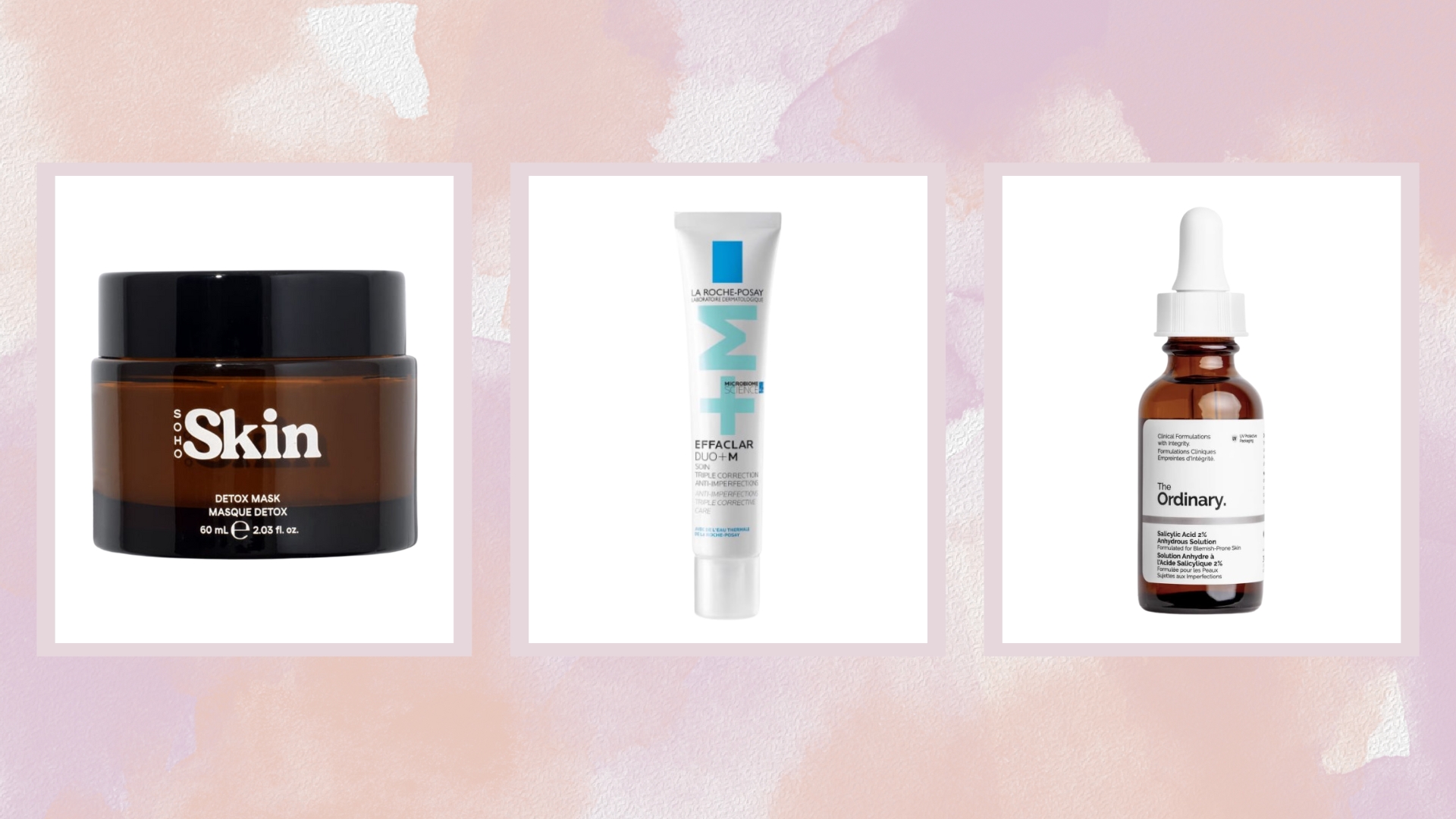
Want to reap the benefits of salicylic acid in your skincare routine? We've quizzed the skincare pros on what the potent exfoliator can do - and rounded up the best salicylic acid products to add to your beauty arsenal...
If you have ever suffered from serious blemishes you may already be aware of this superpowered spot buster. To put it simply, salicylic acid (say it with us: sal-i-cy-lic) is acne’s arch-nemesis. Targeting everything from papules and pustules to nodules and cysts - no breakout is safe. It works by penetrating your skin at a deeper level, clearing congestion, unblocking pores and exfoliating the skin - salicylic acid is a chemical exfoliant - which all help to prevent spots.
But how do you incorporate it into your skincare routine? And how do you choose the right one for you - to avoid any classic salicylic acid mistakes? The skincare experts weigh in.
The best salicylic acid products, as reviewed by a beauty expert
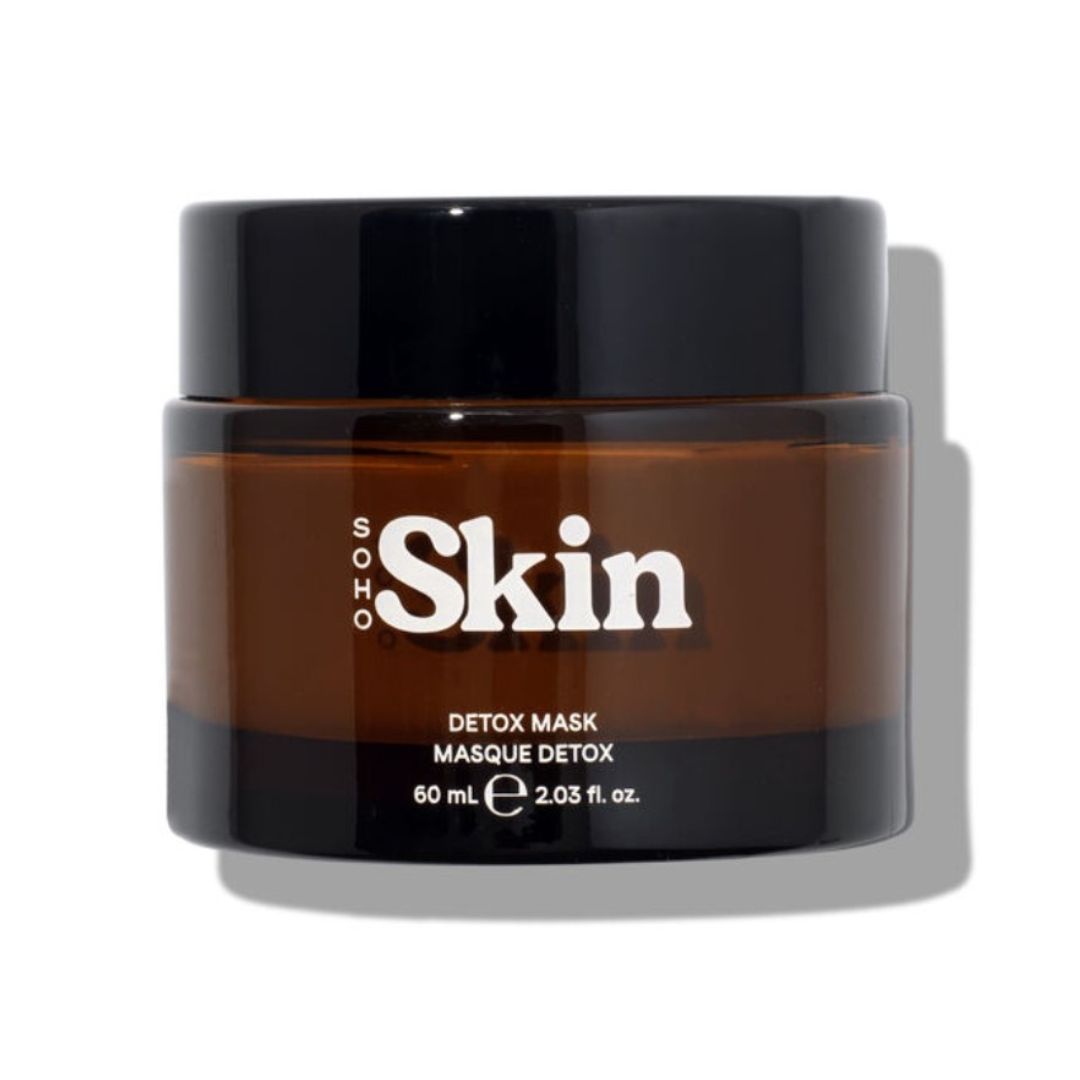
RRP: £60 | Key ingredients: French green clay purifies, salicylic acid works to decongest and Bromelain is a gentle exfoliating enzyme derived from pineapples.
I haven’t tried anything from the beauty brand, Soho Skin, yet this I was excited to try. However, £60 for a 60ml mask is pretty steep, so I was hopeful that it could work miracles minimising my pores and clearing a niggling spot that had overstayed its welcome.
I smeared the clay-like paste on targeted areas (nose and chin) rather than all over my face as I was a bit concerned of zapping moisture from the rest of my already-dry complexion. Verdict? It’s like a Dyson for the face, sucking out dirt and impurities gently - and surprisingly, with no drying effect. My pores have noticeably shrunk and my spot has packed its bags. Pricey? Yes. Effective? Absolutely.
Pros: Ingenious at clearing pores without drying skin , clears blemishes quickly and gentle but effective
Cons: Pricey for the ml
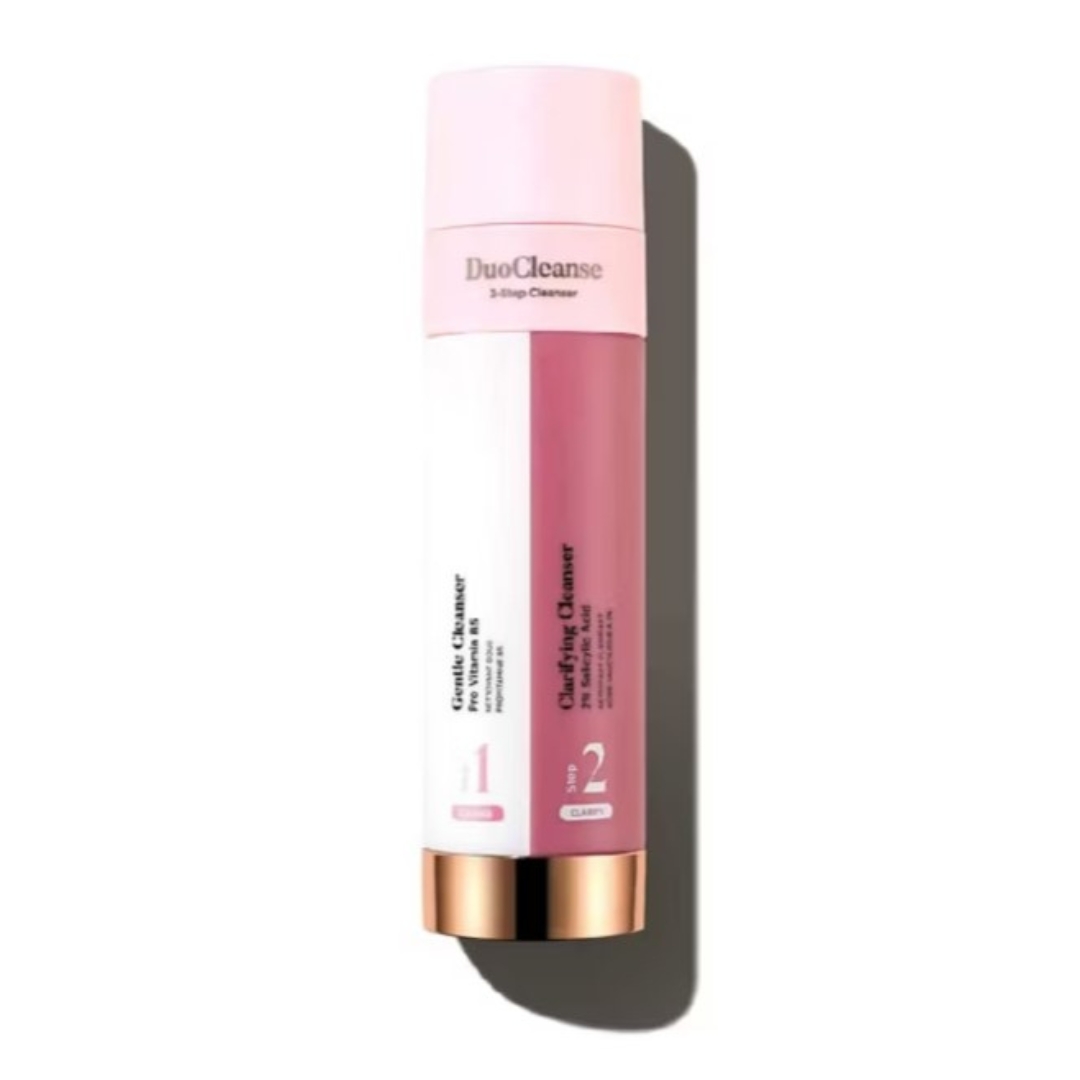
RRP: £34 | Key ingredients: 2% salicylic acid with aloe vera to retain skin moisture and tea tree for its pimple-fighting properties.
Let’s talk about double cleansing. Faff or fruitful? Realistically, I commit to this two-step routine about 80% of the time - because let’s be honest, some evenings I just can’t be bothered. Aimee Connolly, of Sculpted by Aimee completely gets this, so has made the commitment to a really good cleansing routine, easy. Basically, it’s a clever product combining two cleansers in one component. So although you still have to do the double cleanser - it’s there right in front of you.
The first cleanse is a lovely hydrating cleanser that removes makeup and SPF really well. The second is a clarifying wash that really ‘got in there’ and made my skin feel super-duper clean, but not tight or dry.
Pros: Very convenient, great for travel and skin feels thoroughly cleansed without dryness
Cons: If you don’t get on with one of the cleansers, you’re stuck with it
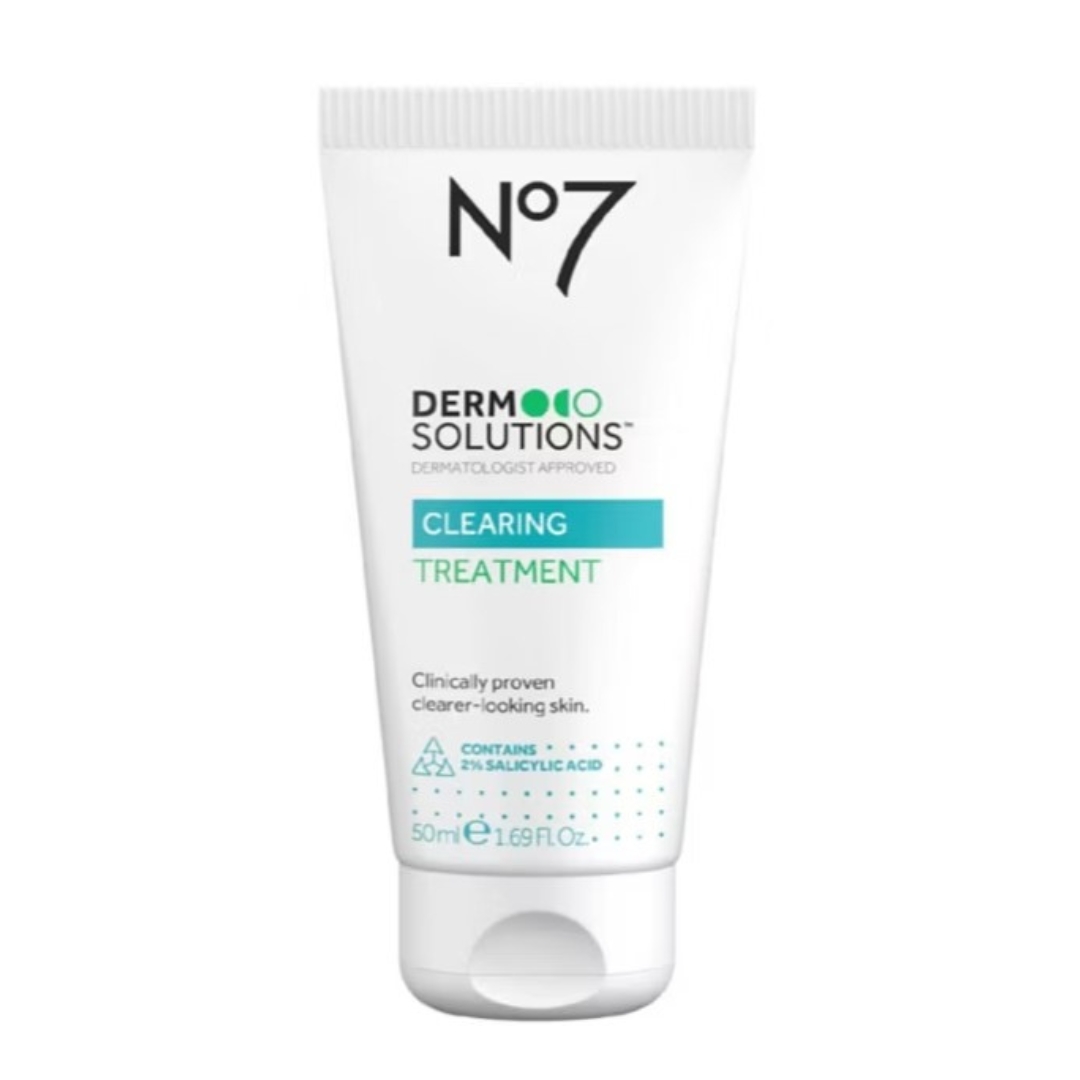
RRP: £18.36 | Key ingredients: Formulated with 2% Salicylic Acid, soothing agent bisabolol, plus licorice to improve the look of pigmentation.
There are certain beauty brands you associate with trust and No7 is one of them. Derm Solutions is the brand’s first ‘skin health’ range. Although not created for my skin per se (I have a combination skin type, rather than oily) I was interested to see if it could tame blemishes and redness triggered by hormones.
My skin was playing up again so I popped the paste-like treatment on the offending spots before bed. It feels sticky at first, but dries down and has a cooling sensation. After using three-times a week, the redness had faded but my spots still hadn’t vanished.
Pros: Trusted brand , research-backed solutions , overnight use and reduces redness
Cons: Not suitable for dry skin - for targeted spots only
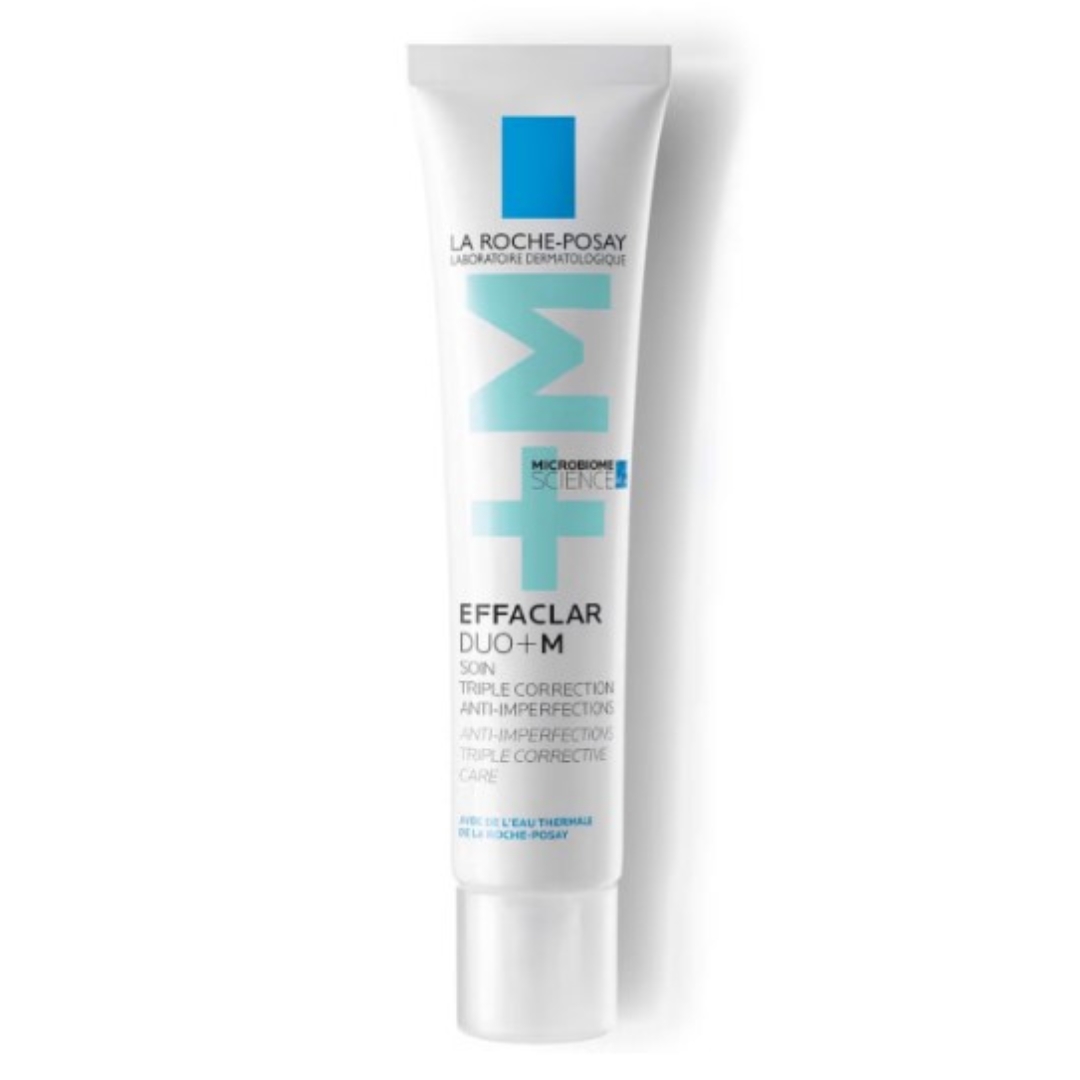
RRP: £21 | Key ingredients : Salicylic acid and lipo-hydroxy acid are supported by niacinamide and zinc PCA, for added brightening and hydrating benefits.
Clarify and hydrate are not two words you’d usually associate as a pairing, but clever La Roche-Posay has nailed the combination. It offers a gentle micro-exfoliation to softly-softly help to decongest pores and promote a smoother skin surface, without causing the skin to freak out.
It’s really lightweight, which at first I thought would not quench my skin’s thirsty needs, but surprisingly I didn’t need to apply a second coat. My skin looked soft and bouncy immediately, and after three weeks, those annoying little post-spot bumps on my chin and nose had disappeared completely.
Pros: Great for first-time salicylic acid users as it’s mild , non-irritating , super hydrating and plumping and offers a vast improvement on skin texture
Cons: Long-term acne may need a stronger approach to treatment
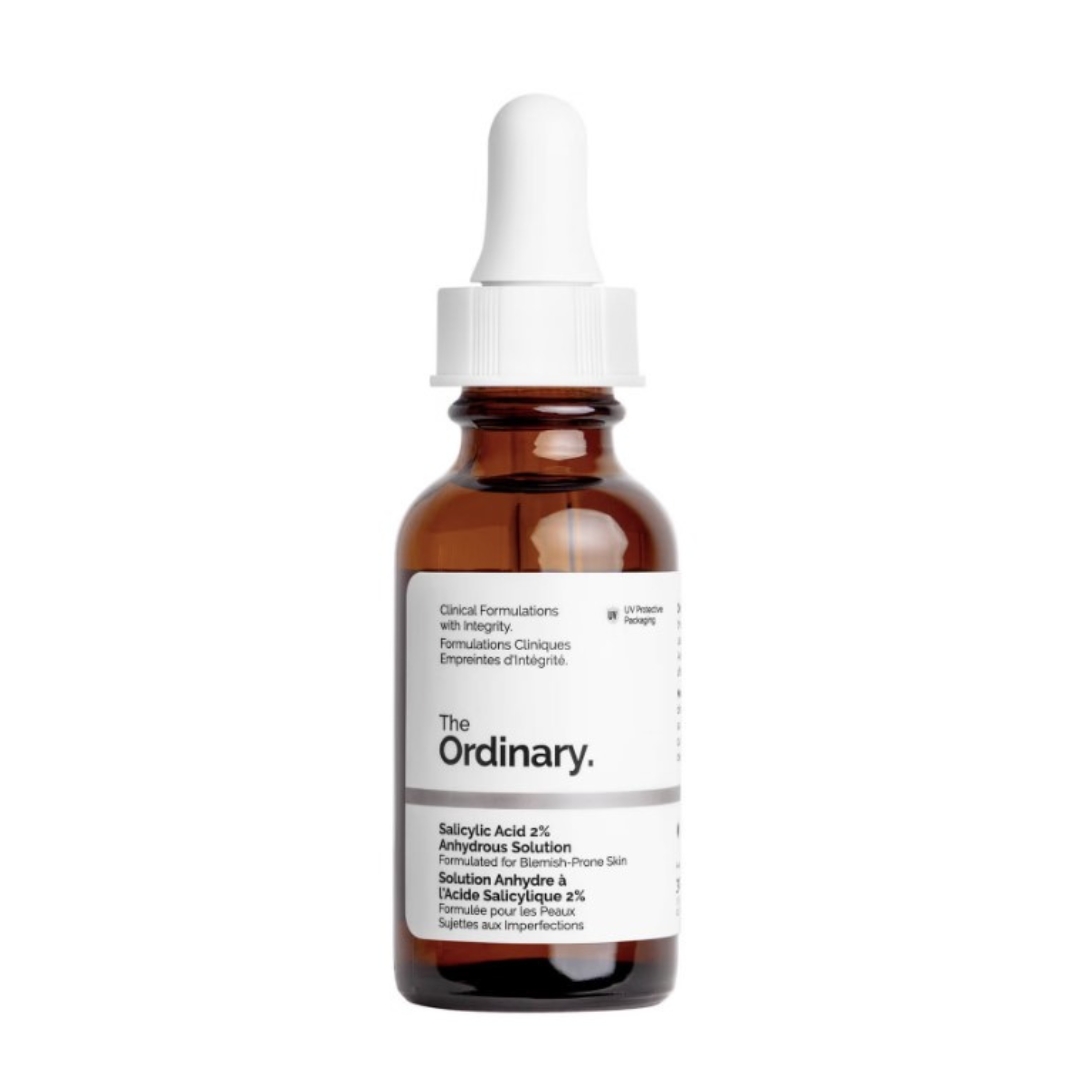
RRP: £6.75 | Key ingredients : 2% Salicylic Acid, squalane to hydrate and prevent moisture loss and 4-t-butylcyclohexanol a soothing ingredient to target signs of discomfort.
Offering a gentle approach to acid-based exfoliation, The Ordinary's salicylic acid has no water in the formula, so it has no pH level, therefore, it won't mess with the pH level of your skin. Meaning, no irritation. The oil-like texture feels slippery at first but dries down to leave a light dewy glow.
I used once daily to see how my skin reacted, but upped it to using it twice daily within 48 hours. I felt that this helped more with post-spot skin texture, rather than spots itself, as my skin tone looked less red and ‘pitted’ where there had been a breakout previously. Considering the price, I am seriously impressed. It’s got good quality ingredients and definitely ticked all the boxes when it comes to an everyday exfoliating serum.
Pros: Slow-release formula so it can be used regularly , water-free , skin tone is noticeably smoother and clearer after continual use and purse-friendly price
Cons: Not necessarily for stubborn spots and got through the bottle pretty quickly
How we tested the best salicylic acid products
Like with the best retinol cream and serums, we chose salicylic acid products in different formulations; from cleansers and toners to spot treatments and serums, and looked for concentration of at least 2%. We navigated towards products that were specifically targeted to skin types as well as formulations.

Beauty editor Charley Williams-Howitt has been pretty lucky with her skin when it comes to breakouts, until that is, recently. Entering perimenopause has caused her complexion to fluctuate and hormonal spots now appear more regularly so is keen to find gentle, non-drying targeted solutions.
What is salicylic acid? All your BHA questions, answered
“Salicylic acid is a beta hydroxy acid (BHA) and is one of the most common and well-known acids for battling blemish-prone skin,” explains Faye Purcell, Head of Research and Development at Q+A.
Where AHAs, like glycolic acid or lactic acid, are ideal for treating the surface of your skin, salicylic acid is oil-soluble and its small molecular size allows it to penetrate deeper into the pores. “It helps to decongest and unclog pores, target spots, and speed up cell turnover to reveal smoother, brighter, and clearer skin,” explains Faye.
How can salicylic acid benefit the skin?
It is a brilliant way to help target unwanted breakouts. “It ‘un-glues’ the bonds that hold dead skin together, chemically exfoliating the skin for a smoother, softer surface,” describes Simone Shoffman, Head of Education at Healthxchange. It also has fantastic anti-inflammatory effects on the skin.
However, its greatest strength, according to Simone, is in helping to treat and prevent both black and whiteheads, otherwise referred to as congestion. “Think of it as a deep cleaner for your face, reaching into the pores (where spots form) and breaking down the debris which will cause these - stopping them in their tracks before they form.”
Who should use salicylic acid?
It is particularly good for those with acne or congestion prone skin, which many of us will suffer from at some point in their life. “Our modern environment means that our skin is constantly exposed to free radicals, in the form of pollutants, which cause inflammation and antioxidant depletion in skin,” explains Simone.
Salicylic acid can also be used to help treat a range of chronic skin concerns, such as psoriasis, due to its ability to encourage cellular turnover and a decrease in inflammation.
Can you use salicylic acid everyday?
A frequently asked question where the active is concerned is 'should you use salicylic acid everyday?' Well, according to the pros, this really depends on the strength and formula.
“Some salicylic acid products are designed for daily use, whereas others (often higher strength treatment products) are meant to be used a few times a week,” says Dr Eleanor Bradley, No7 Science Manager. If you have dry or sensitive skin, then it is best to start with a low percentage and use it gradually before committing to it daily, for example every other day. If any redness or irritation appears, stop immediately.
Can salicylic acid damage your skin?
“People often over-use salicylic for acne or oily skin, especially in cleansers and end up exacerbating the problem with more persistent breakouts from dry skin,” says Mariam Abbas, Advanced Facialist. “It is best used in formulations with hydrating and barrier repair ingredients that can work on nourishing the skin to prevent the skin from becoming dry and irritated.”
Those with skin congestion should choose a non-comedogenic moisturiser to prevent further blockage. “And protecting the skin daily with SPF is important, as your skin can be more sensitive to UV exposure when using active ingredients,” adds Simone.
Where will you find salicylic acid?
You can find salicylic acid in many skincare products, but it is most often seen in face cleansers, acne treatments and serums. Over-the-counter topical treatments come in concentrations between 0.5% to 2%. Leave-on products usually sit between 1-2 % BHA with no alcohol or fragrance.
Can you use salicylic acid with other actives, such as vitamin C?
When using two potent ingredients, it's wise to take precautions before combining them. However, if the correct type of products are used, this can be a winning combination for clear skin. “Vitamin C absorbs most easily when the skin is at a lower pH level, and as salicylic acid is an acid itself - it lowers the pH level of the skin,” explains Simone. “Applying Vitamin C after salicylic acid will help to increase its absorption and efficacy.”
While using salicylic acid and retinol in your skincare regimen is perfectly safe and can make it more effective, it may lead to dry skin when used too frequently. Applying salicylic acid first will produce an exfoliating effect that can help retinol infiltrate the skin more effectively, meaning that you will get the utmost benefits like firming, smoothing and brightening.
Sign up to our free daily email for the latest royal and entertainment news, interesting opinion, expert advice on styling and beauty trends, and no-nonsense guides to the health and wellness questions you want answered.
Charley Williams-Howitt has over 20 years of experience working in the beauty industry. As well as previously writing for lifestyle titles, such as woman&home, Woman and Woman's Weekly, Charley has worked for British institutions like Marks and Spencer, John Lewis, and Superdrug creating visual and editorial content cross-platform. Starting her career in the fashion cupboard at Cosmopolitan magazine, she eventually escaped the piles of clothes to discover a world of makeup, moisturizers, and models.